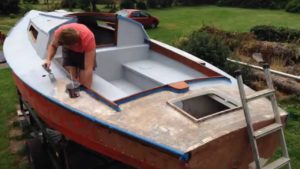 How hard can be buying a can of paint for your boat’s deck? Surpsisdinginly hard. There are probably millions of types of paint and hundreds of the kinds of marine paint, but every possible situation may require you to apply a particular type of paint.
How hard can be buying a can of paint for your boat’s deck? Surpsisdinginly hard. There are probably millions of types of paint and hundreds of the kinds of marine paint, but every possible situation may require you to apply a particular type of paint.
Painting the deck can be one of those scenarios. After all, you can’t paint the deck with any paint you can get your hands on. Technically it is a possibility, but I advise against doing so. Not every paint is suitable for painting the deck. After all, the deck is exposed to some of the harshest conditions in the world 24/7. The sea water can eat through a layer of poor quality paint like fire eats plywood, and good deck paint is laid to last at least a few seasons.
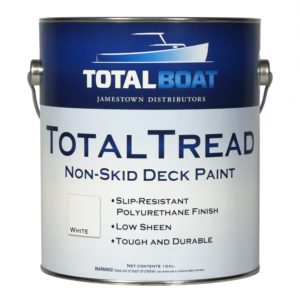
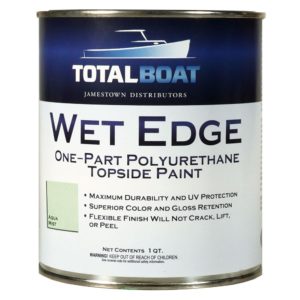
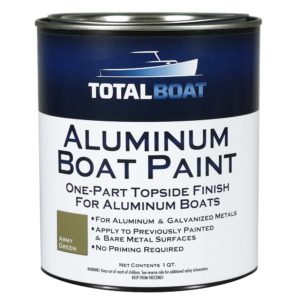
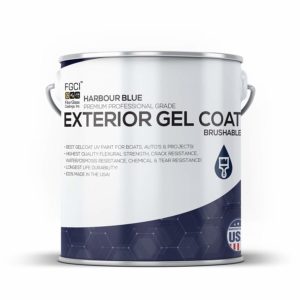
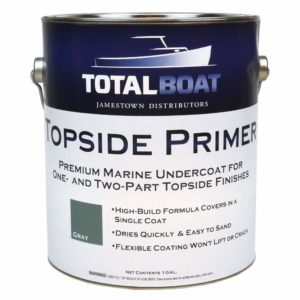
Top 5 Best Deck Paints in 2019
1TotalBoat TotalTread Paint — Best for Any Surface
As expected from a marine grade paint, the TotalTread paint is UV-resistant and non-skid, which means it won’t fade or peel and offers a high-traction surface. Basic criteria met, congratulations. Now, to the features.
The TotalTread is a universal paint. You can lay it on fiberglass, wood, or even an old coat of paint. It’s going to stay, no matter how intensively you clean it. For metals, you have to have the surface primed for the paint. But if you do that, you will have no problems with it.
The grip is assured thanks to non-abrasive wax texturing agents. This premixed formula does not contain traditional silica abrasive additives. The more paint you lay on, the better grip you’re going to have. Also, the paint reduces the sun glare, which is a must for deck paint.
Unfortunately, you can’t spray paint this paint, but you can use either a brush or a roller. It also comes in only three colors.
- UV-resistant
- Non-skid
- Won’t fade or peel
- High-traction surface
- For metals, you have to have the surface primed for the paint
2TotalBoat Wet Edge Paint — Best Boat Paint Overall
If you want to have a great choice of color, then the Wet Edge paint is something that you should consider. On top of that, this deck paint is sprayable, so you can lay it in any way you wish.
Unfortunately, when it comes to seawater resistance, this boat paint is definitely not in the top 10. On the other hand, it’s a deck paint, and it performs excellent as such. The manufacturer advises against applying this paint on surfaces that are going to be submerged for more than 72 hours. Well, if your deck is submerged for that long, you can safely assume that you have a problem more prominent than a coat of paint that’s about to start peeling off because of the aggressive environment.
Otherwise, it’s an excellent polyurethane high-gloss paint/finish combo that will make your boat look like a dream ship.
You can add some non-skid additives for better traction. Also, I advise that you prime the surface with a primer paint before laying this one.
- Sprayable
- An excellent polyurethane high-gloss paint/finish combo that will make your boat look like a dream ship
- Non-skid additives for better traction
- When it comes to seawater resistance, this boat paint is definitely not in the top 10.
3TotalBoat Aluminum Paint — Primer Paint for Metals
If you have a metal boat (doesn’t matter if it’s aluminum or galvanized metal), then this paint is definitely something you should consider and try. You will save your money on primer paint and also lots of time because you won’t have to wait for the primer to dry. The paint comes in 5 colors.
That said, it’s a far better paint for the hull than it is for the deck. You can lay it on the deck all right because the paint is designed to be applied both under the waterline and above it. However, it lacks a few key components when it comes to deck paints. It doesn’t have non-skid additives. You will have to mix them in by yourself, but if you do, there’s no telling how well this paint will perform.
On the other hand, if you combine this paint with a rubberized marine carpet, it’s going to give you all the traction you need. You can also use this paint as a primer and lay a coat of a non-skid paint over it. When it comes to bare metals and strong adhesion, you won’t find a better primer paint.
- Fast dry
- Works on metals
- Strong adhesion
- A far better paint for the hull than it is for the deck
- Doesn’t have non-skid additives
4HARBOUR BLUE GEL COAT KIT — Best Gelcoat Kit
If you want to cover your boat with something that can withstand some really extraordinary circumstances, the gelcoat kit is definitely something you should try.
Technically, it is not considered a paint. But it might as well be one. It’s flexible, water-resistant, UV-resistant, and durable in every way you could think of.
Gel coat typically takes some time to dry, but this kit comes with a dedicated catalyst.
Is it suitable for your deck? If you have a fiberglass boat, then yes. That said, I advise using it as a prep job for the actual painting.
- UV-resistant
- Flexible
- Water-resistant
- Durable in every way you could think of
- Comes with a dedicated catalyst
- Not considered a paint
5TotalBoat Marine Paint Primer — Best Primer Paint Overall
Remember how I said some of the paint products on my list need a good primer paint? Well, this is it. It is made for application on any surface, except for bare metals. For those purposes, it would be better to use the Aluminum Paint from TotalBoat.
The paint is not meant for being applied below the waterline, but since it’s all about decks, for now, that can hardly be called a disadvantage.
The paint is sprayable, but you can use a brush or roller if you want. Either way, this paint will deliver exceptional results. It dries fast, and it won’t peel off easily.
Also, since this is a primer paint, here’s one important tip: don’t be too generous applying it. One coat is enough, and you don’t need a second one.
The paint is available in 2 colors, but since this is a primer paint, even two colors are quite a choice.
- Sprayable
- Won’t peel off easily
- Dries fast
- Not meant for being applied below the waterline
